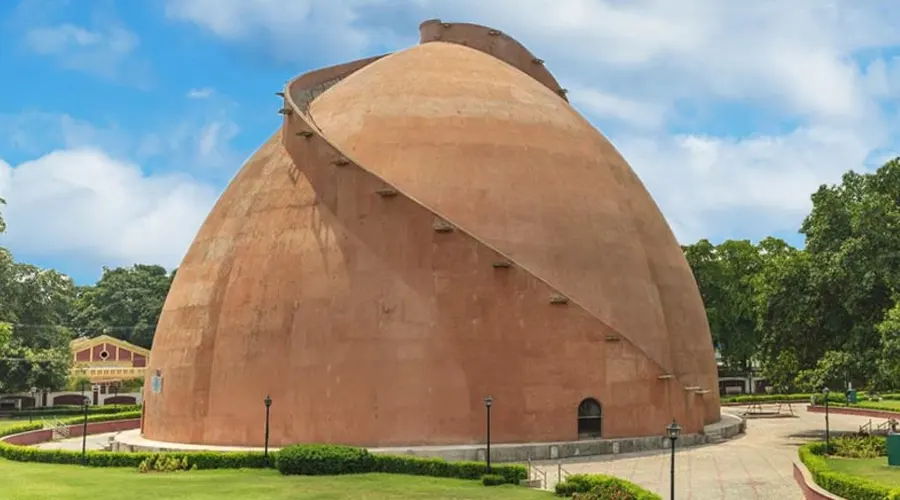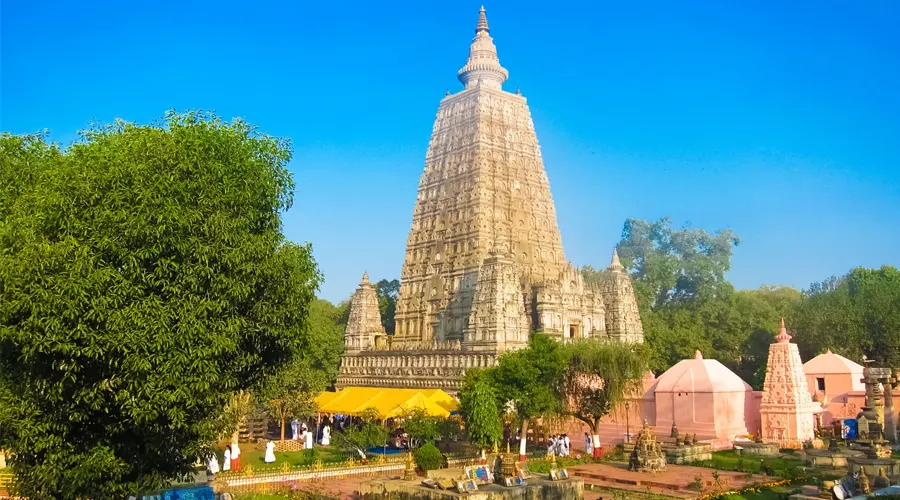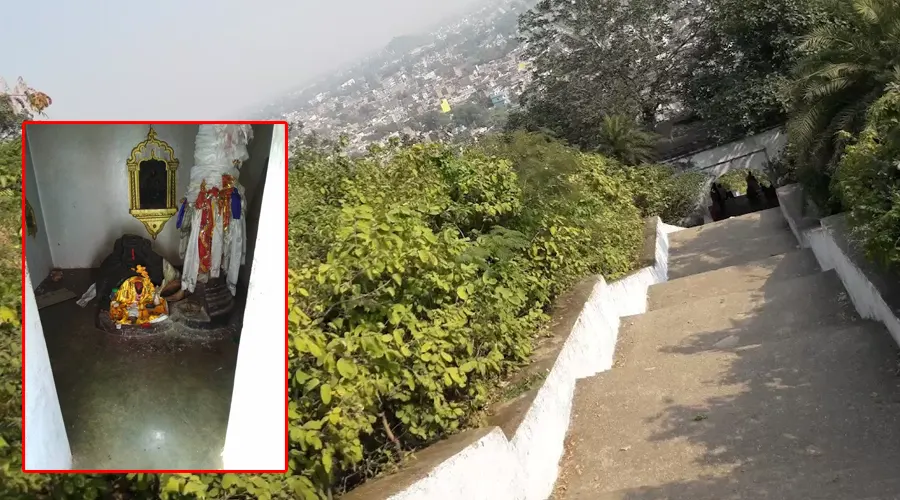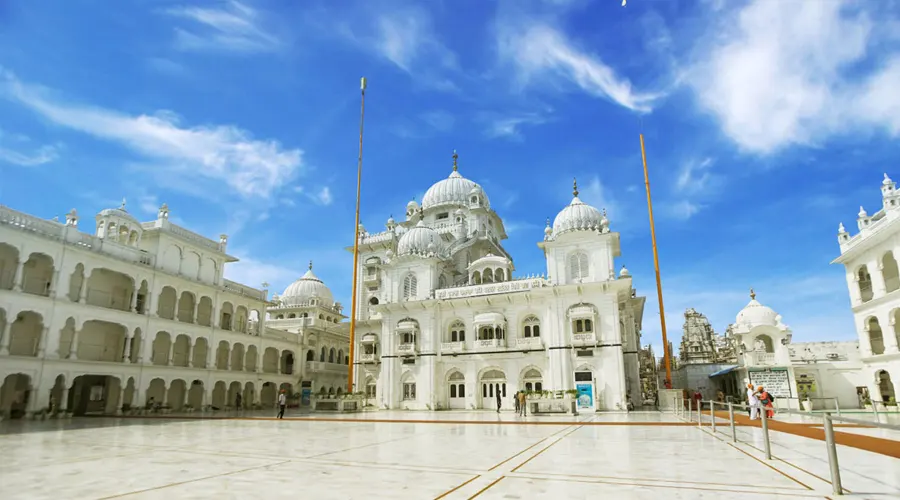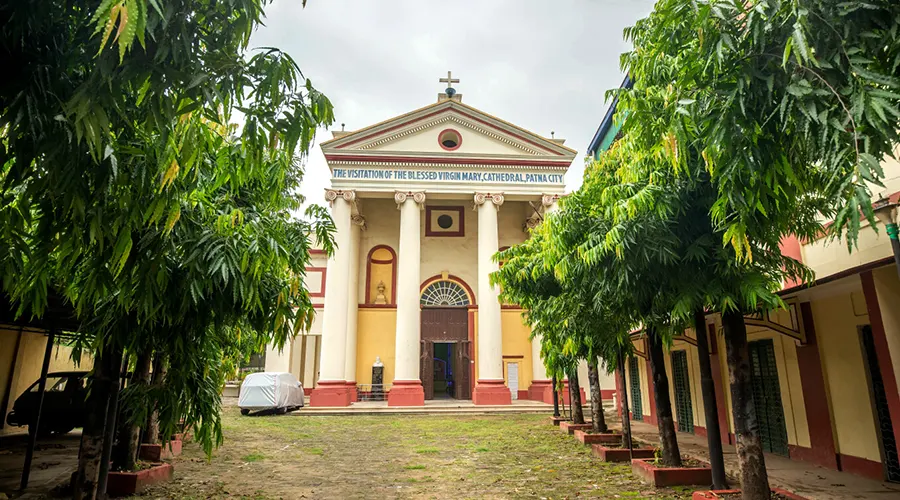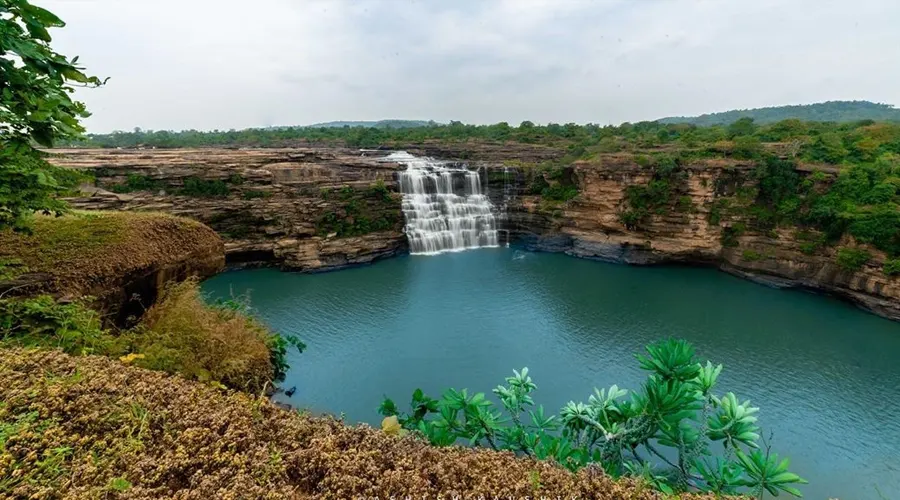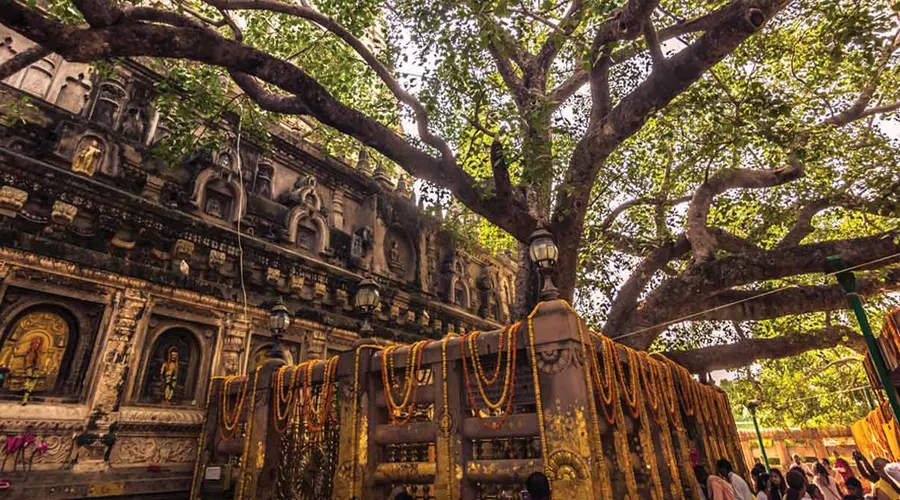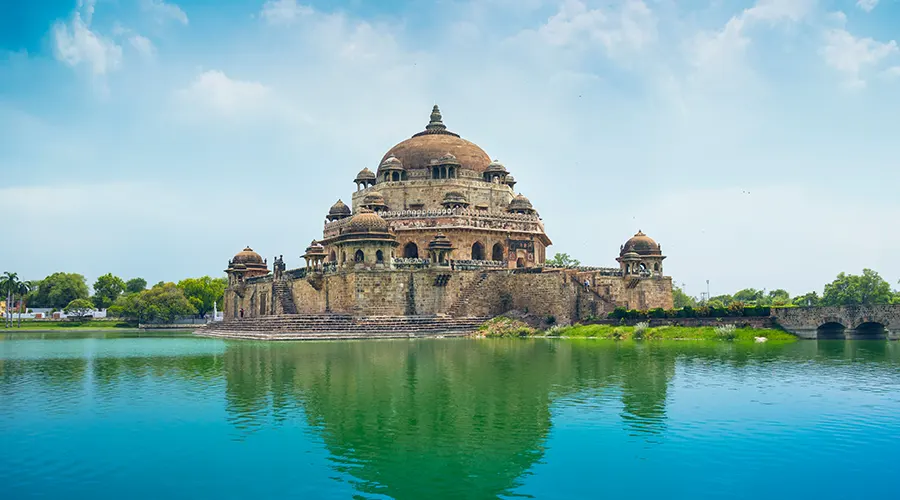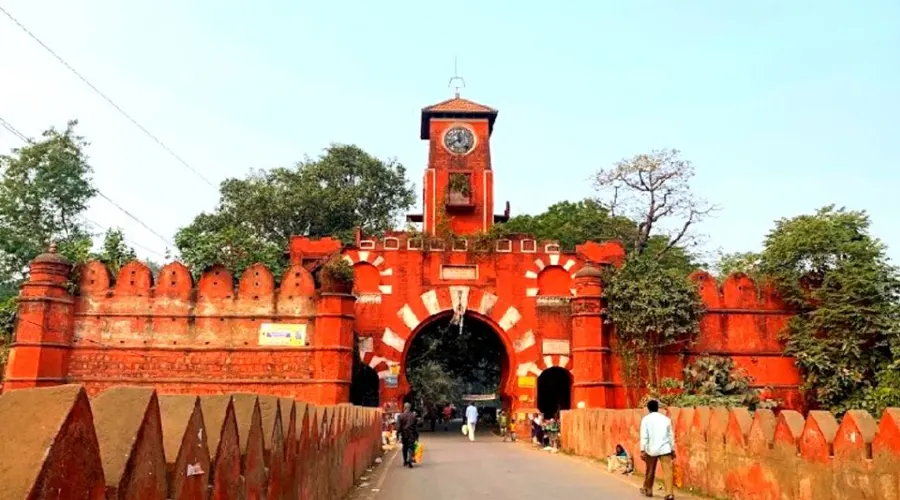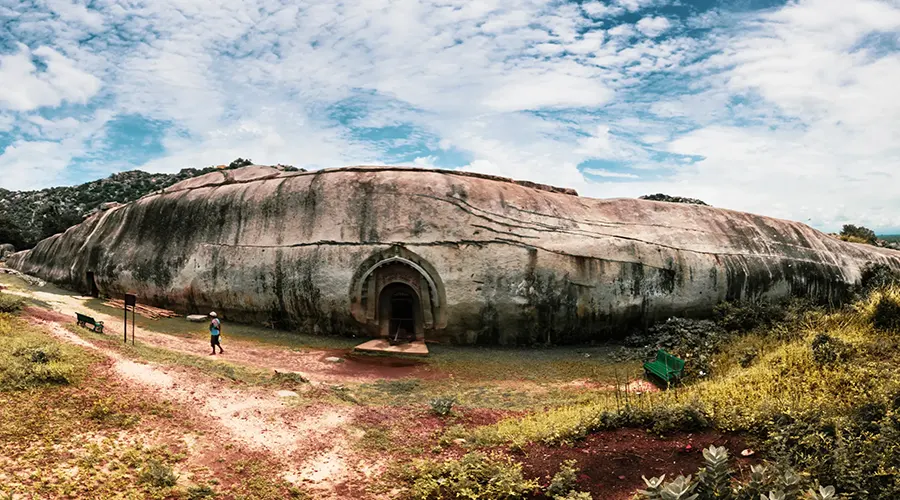Golghar
Situated in the city of Patna, Golghar is a simple yet charming architecture that is an amalgam of history and natural beauty. It was built in 1786 by Captain John Garstin to serve as a storehouse. Incidentally, Golghar was never filled to its maximum capacity as it is believed that due to an engineering fault the doors open inwards only, and if the granary were to be filled all the way, the doors would not open.
In addition to being a magnanimous granary, the top of Golghar presents a wonderful panoramic view of the city and the Ganges. Owing to its peaceful location and sublime natural setting, Golghar is one of the many spots in the city that citizens visit to get a respite from the din of the city.
Rising from the midst of a lush green garden, the stupa-shaped structure of Golghar is an inviting sight to behold. It is encircled by a flight of 145 stairs that take you up to the top, from where you can see a bird's eye view of the entire city. The gentle wind blowing over the zenith as you behold the sight of the ancient city that lies ahead of you is a serene experience. In addition to this, you can also arrange for a picnic in the garden that this attraction lies in. To increase the visitor influx to Golghar, a light and sound show has been introduced here as well. Visit this destination for a quaint day out with friends and family.
History of Gol Ghar
The purpose behind the construction of Golghar was not tourism at all, rather it was meant to safeguard the population against the disaster of food shortage. After the devastating famine of 1770 which took the lives of 10 million people in regions of Bengal, Bihar, and modern-day Bangladesh, Warren Hastings, the then Governor-General of India, ordered the construction of this beehive-shaped structure to store grains for the British Army.
It was conceived and built by Captain John Garstin, an engineer with the East India Company, and has a storage capacity of 140000 tons. The construction of Golghar was completed in 1786 and there has been a conscious effort to improve the appearance and maintenance of the same since 2002.
Interior of the Gol Ghar
Built along the lines of a stupa, the beehive-like structure of Golghar stands tall at a height of 29 meters. The edifice stands without any pillars and has a 3.6-meter-thick wall at the base. The entire structure is quite simple in design and does not have any embellishment on its surface.
A journey of 145 steps along the perimeter of Golghar takes you to the top, where the structure has a hole from which bags of grain can be dropped into the safehouse.
Grain Storage Capacity
140,000 tonnes of grain can be kept in this house. This Golghar is 125 meters wide and 29 meters high. Its specialty is that it does not have a single pillar. Its walls are 3.6 meters thick. Such bricks have been used in Golghar, but stones have been used in place of bricks for about three meters on its peak.
It is said that the laborers used to reach the top of Golghar by carrying grain from one side dropping the grain in the two feet seven-inch diameter hole made there and descending from the ladder on the other side. However, later this hole was closed. The upper end of Golghar can be reached by climbing 145 steps. One can get a panoramic view of a large part of the city, especially the banks of the Ganga, from here.
Laser and Light Show at Golghar
If you wish to learn more about the history of Patna and Golghar, the light and laser show here is just the thing for you. Using an array of colorful laser lights, sounds, and illustrations, an attractive show has been made part of this attraction and can be witnessed at 6:15 PM and 7:15 PM on Friday, Saturday, and Sunday.
The tickets for the same are available 30 minutes before the show begins and tickets are priced at INR 30 per person.

